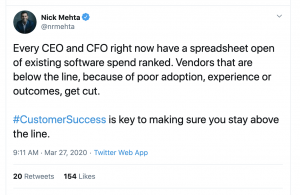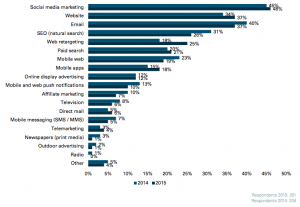10 Video Marketing Trends
Keeping ahead of Digital Trends can keep the savviest of us on our toes – and given the speed in which the landscape constantly evolves in the world of Video Marketing, you’d be forgiven for struggling to keep up.
Technology is changing as fast as the platforms and digital channels that drive them. As consumers, our thirst for content continues to spiral, whilst the major social networks compete for our time, attention and loyalty.
The battle for our loyalty is not without casualties. January witnessed the demise of Twitter’s ‘Vine’ app, its ‘6-second video’ video platform unable to find relevance in today’s marketplace. Meanwhile, social media giant ‘Snapchat,’ with 100 million active users and 10 billion daily videos shares, is dominating the 18-24 year social network scene.
We’re also observing the growth of Virtual Reality, a technology which has been steadily maturing over recent years. We predict 2017 will see far greater VR experiences, demonstrating how we will interact with online video in both gaming and commercial video experiences. Combined with 360 video, these technologies are shaping the future and re-writing the rule book.
Our following trends reflect where smart businesses are spending their time and money, reaping effective results from their Video Marketing activity:
Facebook Live
We start our list with the phenomenon that is live video streaming across social networks such as Facebook live and periscope. The former, due to its current global online domination and sheer size of users, has exploded onto the live video scene. The statistics supporting its growth, acceptance and consumption are both undeniable and incredible. In 2014 CEO Mark Zuckerberg was quoted as saying “In five years most of Facebook will be video.” We think he’s well on his way.
‘People spend 3x longer watching video which is Live compared to pre-recorded video.’- (Facebook)
Quality Over Quantity
Owning a video camera or being able to operate a phone-camera, doesn’t automatically qualify that person to be able to produce the type of content your business should stand by. Sadly, this is a fact ignored by many organisations, resulting in the proliferation of ‘home-made’ content swamping the internet. Developing a consistent and constant supply of rich appropriate content should be encouraged, but not at the cost of compromising your brand and values. Chose quality over quantity by seeking the support of professionals who can help you create and deploy effective Video and Animation.
‘By 2017, video content will represent 74% of all internet traffic.’- (Source)
How-To Videos
By no stretch a new trend, but certainly one that is growing in popularity, as we all spend more time searching ‘how-to’ achieve said task. From recipes and home DIY to vehicle maintenance and exercise classes, there is no stone left unturned. Whatever your craft, quick fix or hobby, there will undoubtedly be content out there for you. As business owners and marketers, there is no better time to be creating training content.
‘51.9% of marketers across the world say videos have the best ROI.’- (Source)
Homepage/Shop Page Video Headers
Driven by style rather than substance, the fashion for full-screen video playout from your homepage shows no signs of abating. Clearly, this is one area where assistance is recommended, ensuring this major ‘touchpoint’ on your customer’s journey is of professional quality. Content is traditionally non-specific, providing prospects with an opportunity to ‘look inside the business,’ meet the team and get a feel for who they are ‘talking to.’ Executed well, this is can be a very effective first impression.
‘Including video on a landing page can increase conversion rates by 80%.’- (Source)
Multi-platform Marketing
Multi-channel marketing as it’s otherwise known is the practice of creating and developing content, designed for specific social and digital platforms. With the myriad of deployment options available, a wise marketer will first seek to understand where their online audience will be, before targeting them with content which is both appropriate and formatted for that channel. For example; video designed for instant engagement on Twitter, may not be suitable on your website’s Case Study page. Winning campaigns will always deploy across a number of key channels, engaging audiences at the right time, in the right place.
‘82% of consumers have been encouraged to take action after watching businesses marketing video.’- (Source)
Virtual Reality
As mentioned, VR has steadily been shaping how we will interact with video in the future. VR and augmented reality is nothing new and we’ve been witnessing the landscape evolve over many years. However, Facebook’s acquisition of ‘Oculus’ in 2014 for $ 2Billion, firmly announced the arrival of VR as a consumer product. It no surprise therefore when Samsung and many other technology giants, quickly developed and started to ship their own VR headsets. To a certain extent, the platform has been developing rapidly amongst the gaming community, whilst clear commercial opportunities for VR will shortly begin to emerge. The adoption of its use will be reflected by acceptance of the requirement to wear the headsets.
‘The Total Number Of Active Virtual Reality Users Is Forecast To Reach 171 Million By 2018.’- (Source)
360 Video
With over 2 million subscribers to it’s VR channel, YouTube is already ahead of the game, streaming thousands of interactive videos, enabling consumers to immerse themselves in 360 degrees of action. Whether it’s providing tours, documenting events or product overviews, the possibilities for 360 video are endless, as is the opportunity for engaging your consumers. The entry cost of hardware has dramatically decreased, allowing anyone with imagination the ability to bring audiences into their world.
‘86% of the businesses that have used 360 video said that it was an effective marketing tool.’- (Source)
Teaser Campaign Videos
Good story telling makes the difference between a video that leaves an impression and one that flops. Discerning audiences will always be drawn to content that evokes emotion or stimulates the senses. This is something that big brands have been doing for some time; think the obscure 15-second trailer for a car commercial, followed by ‘visit our website for the full story.’ If the desire is to subtly lead your audience, then seek to build engagement at various points in the ‘sales funnel.’ Anticipate when and where they may encounter your video messages. Utilise as many digital channels as appropriate, deliver tailored content, entice your viewer to take action and find out more.
‘93% of marketers are using video in their campaigns.’- (Source)
Cinematic Production Techniques
The use of drones (aerial video), time-lapse and floating ‘gimbal’ devices is becoming increasing prevalent in professional Video Production. For those organisations who wish to stand out from the masses, or those producing ‘in-house’ video, the need to ‘raise your game’ has never been so important. As such production techniques are now more accessible, the days of the all-too-common dull Corporate Video are rapidly disappearing. Consumers expect to be wowed and so the appetite for cinematic experiences regardless of subject matter is strong.
‘97% of businesses said that their explainer video has helped increase user understanding of their product or service.’- (Source)
Interactive Video
‘Interactive Video’ in its most humble form has existed since the heady days of Adobe Flash. However, in the online space, beyond YouTube’s interactive buttons, this technology has struggled a little to find form. Shamefully, despite its availability and versatility, the practice of adding interactive links to online video, has been somewhat underutilised. Nowadays, as consumers, we’re steadily becoming used to interacting with additional layers of information contained within the video window – and as acceptance grows further, and online formats such as HTML5 offers developers the scope to build new functionality (such as shopping baskets and product information…) the prevalence of this will become inevitable.
‘76.5% of marketers and small business owners who have used video marketing say it had a direct impact on their business.’- (Source)
Now, more than ever, all businesses small and large, must seek to define their brand and raise their profile with video. The playing field is vast, complex and can yield inconsistent results if the trends are ignored. However, by understanding some of the rules, adhering to popular patterns and understanding where your target audience ‘hangs out,’ Video and Animation can be your most powerful marketing weapon. Assess what is viable and possible within your organisation and seek to make pathways or shift focus. As always, results should be measured and analysed to gauge performance.
Digital & Social Articles on Business 2 Community(27)





